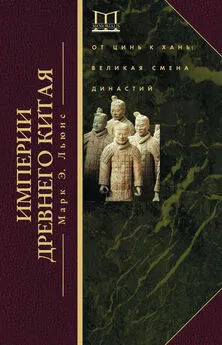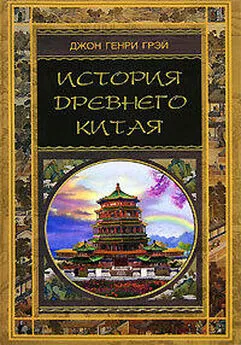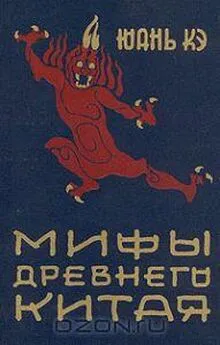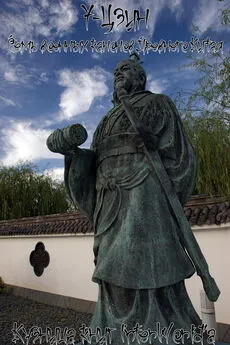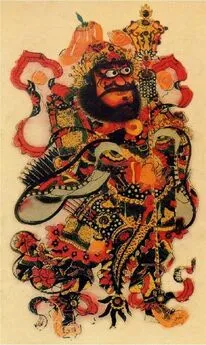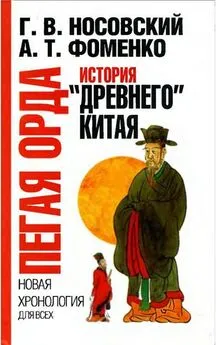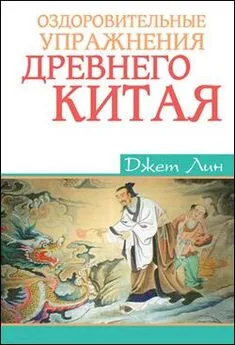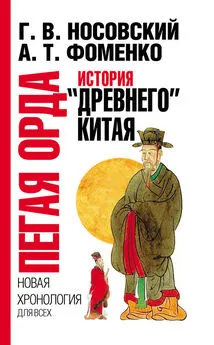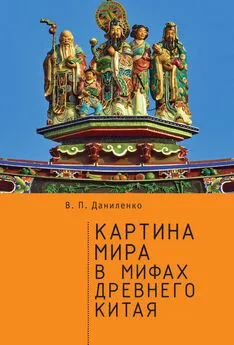Марк Льюис - Империи Древнего Китая. От Цинь к Хань. Великая смена династий
- Название:Империи Древнего Китая. От Цинь к Хань. Великая смена династий
- Автор:
- Жанр:
- Издательство:ЛитагентЦентрполиграфa8b439f2-3900-11e0-8c7e-ec5afce481d9
- Год:2016
- Город:Москва
- ISBN:978-5-227-06557-5, 978-5-227-06558-2
- Рейтинг:
- Избранное:Добавить в избранное
-
Отзывы:
-
Ваша оценка:
Марк Льюис - Империи Древнего Китая. От Цинь к Хань. Великая смена династий краткое содержание
Книга американского исследователя Марка Эдварда Льюиса посвящена истории Древнего Китая в имперский период правления могущественных династий Цинь и Хань. Историк рассказывает об особой роли императора Цинь Шихуана, объединившего в 221 г. до н. э. разрозненные земли Китая, и формировании единой нации в эпоху расцвета династии Хань. Автор анализирует географические особенности Великой Китайской равнины, повлиявшие на характер этой восточной цивилизации, рассказывает о жизни в городах и сельской местности, исследует религиозные воззрения и искусство, а также систему правосудия и семейный уклад древних китайцев. Авторитетный китаист дает всестороннюю характеристику эпохи правления династий Цинь и Хань в истории Поднебесной, когда была заложена основа могущества современного Китая.
Империи Древнего Китая. От Цинь к Хань. Великая смена династий - читать онлайн бесплатно ознакомительный отрывок
Интервал:
Закладка:
Rawson, Jessica, ed. Mysteries of Ancient China: New Discoveries from the Early Dynasties. London: British Museum Press, 1996.
Riegel, Jeffrey K. “Kou-mang and Ju-shou.” Cahiers d’Extrime-Asie: Special Issue, Taoist Studies II5 (1989—1990): 55—83.
Rouzer, Paul. Articulated Ladies: Gender and the Male Community in Early Chinese Texts. Cambridge: Harvard University Press, 2001.
Sage, Steven F. Ancient Sichuan and the Unification of China. Albany: State University of New York Press, 1992.
[Jiao zheng] Sanfu huang tu ([Annotated and Corrected] Yellow Map of the Capital Region). Taipei: Shijie, 1974.
San Guo zhi (Record of the Three Kingdoms). Beijing: Zhonghua, 1959.
Schelach, Gideon, and Yuri Pines. “Power, Identity and Ideology: Reflections on the Formation of the State of Qin.” In Asian Archaeology. Ed. Miriam Stark. London: Blackwell, 2005.
Scott, James. The Moral Economy of the Feasant. New Haven: Yale University Press, 1976.
Seidel, Anna. “Post-mortem Immortality—or the Taoist Resurrection of the Body.” In Gilgul: Essays on Transformation, Revolution and Ferma-nence in the History of Religions. Leiden: E. J. Brill, 1987.
–“Traces of Han Religion in Funeral Texts Found in Tombs.” in
Dokyo to shukyo bunka. Ed. Akizuki Kan’ei. Tokyo: Hirakawa, 1987.
Shang Jun shu zhu yi (Commentary and Vernacular Translation of the “Book of Lord Shang”). Annotated by Gao Heng. Beijing: Zhonghua, 1974.
Shang shu zheng yi (The Correct Meaning of the “Canon of Documents”). In Shisan jing zhu shu (The Thirteen Classics with Commentaries and Subcommentaries), Vol. 1. Taipei: Yiwen, 1976.
Shaughnessy, Edward L. “Military Histories of Early China: A Review Article.” Early China 21 (199 6): 159-182.
Shi ji (Records of the Grand Historian/Astrologer). Beijing: Zhonghua, 1959.
Shi ming shu zheng bu (Corrected and Supplemented Subcommentary to “Explaining Names”). Annotated by Wang Xianqian. Shanghai: Guji, 1984.
Shui yuan (Garden of Persuasions). In Han Wei cong shu (Collecteana of the Han and Wei Dynasties), Vol. 1. Taipei: Xin Xing, 1977.
Shuihudi Qin mu zhu jian (Bamboo Strips from the Qin Tomb at Shui-hudi). Beijing: Wenwu, 1978.
Shuo wen jie zi zhu (Commentary on “Explanations of Simple and Compound Graphs”). Compiled by Xu Shen. Annotated by Duan Yucai. Taipei: Yiwen, 1974.
Sima fa zhi jie (Direct Explanations of the “Methods of the Commander”). Annotated by Liu Yin. In Ming ben wu jing qi sbu zhi jie (Ming Edition of the Direct Explanations of the Seven Military Classics), Vol. i. Taipei: Shi Di Jiaoyu, 1972.
Sivin, Nathan. Medicine , Philosophy and Religion in Ancient China: Researches and Reflections. Aldershot, Ashgate: Variorum Series, 1995.
Skinner, G. William. “Cities and the Hierarchy of Local Systems.” In The City in Late Imperial China. Ed. G. William Skinner. Stanford: Stanford University, 1977, pp. 275—351.
–“Marketing and Social Structures in Rural China,” 3 parts. Journal of Asian Studies 24.1 (1964): 3-44; 24.2 (1964): 195-228; 24.3 (1965): 363-399.
–“Regional Urbanization in Nineteenth-Century China.” In The
City in Late Imperial China. Ed. G. William Skinner. Stanford: Stanford University Press, 1977, pp. 211—252.
Sou shen ji (Record of Collected Spirits). Beijing: Zhonghua, 1979.
Steinhardt, Nancy S. Chinese Imperial City Planning. Honolulu: University of Hawaii Press, 1990.
Strickmann, Michel. “Dreamwork of Psycho-Sinologists: Doctors, Tao-ists, Monks.” In Psycho-Sinology: The Universe of Dreams in Chinese Culture. Ed. Carolyn T. Brown. Washington, D.C., Woodrow Wilson International Center for Scholars, 1988.
Sukhu, Gopal. “Monkeys, Shamans, Emperors, and Poets: The Chuci and Images of Chu during the Han Dynasty.” In Constance Cook and John Major, eds., Defining Chu. Honolulu: University of Hawaii Press, 1999.
[Shi yi jia zhu] Sunzi ([Ten Schools of Commentary on] Master Sun). Shanghai: Guji, 1978.
Taiping huan yu ji (Record of the World from the Taiping Reign Period). Hongxing Shan Fang, 1803.
Taiping yu lan ([Florilegium for] Imperial Inspection in the Taiping Reign Period). Taipei: Shangwu, 1935.
Teiser, Stephen. “Introduction: The Spirits of Chinese Religion.” In Religions of China in Practice. Ed. Donald S. Lopez, Jr. Princeton: Princeton University Press, 1996.
Thorp, Robert L. “Origins of Chinese Architectural Style: The Earliest Plans and Building Types.” Archives of Asian Art 36 (1983): 22—39.
Twitchett, Denis. “The T’ang Market System.” Asia Major 12:2 (1966): 202-248.
Van Zoeren, Steven. Poetry and Personality: Reading, Exegesis, and Hermeneutics in Traditional China. Stanford: Stanford University Press, 1991.
von Falkenhausen, Lothar. “Issues in Western Zhou Studies: A Review Article.” Early China 18 (1993): 145-171.
–“Mortuary Behavior in Pre-Imperial China: A Religious Interpretation.” In Religion in Ancient and Medieval China. Ed. John La-gerwey. Hong Kong: Chinese University of Hong Kong Press, 2004.
–“Sources of Taoism: Reflections on Archaeological Indicators
of Religious Change in Eastern Zhou China.” Taoist Resources 5:2 (1994): 1-12.
– Suspended Music: Chime-Bells in the Culture of Bronze Age China.
Berkeley: University of California Press, 1993.
von Glahn, Richard. The Sinister Way: The Divine and the Demonic in Chinese Religious Culture. Berkeley: University of California Press, 2004.
Wakefield, David. Fenjia: Household Division and Inheritance in Qing and Republican China. Honolulu: University of Hawaii Press, 1998.
Waldron, Arthur. The Great Wall of China: From History to Myth. Cambridge: Cambridge University Press, 1990.
Waley, Arthur, tr. The Nine Songs: A Study of Shamanism in Ancient China. London: George Allen & Unwin, 1955.
Wallacker, Benjamin E. “Han Confucianism and Confucius in Han.” In Ancient China: Studies in Early Civilization. Ed. David T. Roy and Tsien Tsuen– hsuin. Hong Kong: The Chinese University Press, 1978.
Wang, Chong. Tun heng ji jie (Collected Explanations of the Balanced Discourses). Annotated by Liu Pansui. Beijing: Guji, 1957.
Wang, Fu. Qian fu lun jian (Interpretation of the Discourses of the Hidden Man). Annotated by Wang Jipei. Beijing: Zhonghua, 1979.
Wang, Yti-ch’tian. “An Outline of the Central Government of the Former Han Dynasty.” Harvard Journal of Asiatic Studies 12 (1949): 134—187.
Wang, Zhongshu. Han Civilization. New Haven: Yale University, 1982.
Watson, Burton, tr. Chinese Rhyme-Prose: Poems in the Fu Form from the Han and Six Dynasties Periods. New York: Columbia University Press, 1971.
Wen xuan (Selections of Refined Literature). Hong Kong: Shangwu, 1978.
Wheatley, Paul. The Pivot of the Four Quarters. Edinburgh: Aldine, 1971.
White, James Boyd. Heracles’ Bow: Essays on the Rhetoric and Poetics of Law. Madison: University of Wisconsin Press, 1985.
– Justice as Translation: An Essay in Cultural and Legal Criticism.
Chicago: University of Chicago Press, 1990.
– Legal Imagination (abridged ed.). Chicago: University of
Chicago Press, 1973.
Wiens, Herold. China's March to the Tropics. Washington, D.C.: Office of Naval Research, U.S. Navy, 1952.
Wilbur, C. Martin. Slavery in China during the Former Han Dynasty ; 206 B.C. – A.D. 25. New York: Russell and Russell, 1943.
Worster, Donald. Rivers of Empire: Water: ; Aridity , and the Growth of the American West. New York: Oxford University Press, 1985.
Wright, Arthur F. “The Cosmology of the Chinese City.” In The City in Late Im perial China. Ed. G. William Skinner. Stanford: Stanford University Press, 1977, pp. 33—74.
Wu, Hung. “The Art and Architecture of the Warring States Period.” In The Cambridge History of Ancient China. Ed. M. Loewe and E. L. Shaughnessy. Cambridge: Cambridge University Press, 1999.
–“Art in Ritual Context: Rethinking Mawangdui.” Early China
17 (1992): 111-144.
–“Beyond the ‘Great Boundary’: Funerary Narrative in the Cang-
shan Tomb.” In Boundaries in China. Ed. John Hay. London: Reak-tion Books, 1994.
–“Mapping Early Taoist Art: The Visual Culture of Wudoumi
Dao.” In Taoism and the Arts of China. Ed. Stephen Little. Chicago: The Art Institute of Chicago, 2000.
– Monumentally in Early Chinese Art and Architecture. Stanford:
Stanford University Press, 1995.
–“Private Love and Public Duty: Images of Children in Early
Chinese Art.” In Chinese Views of Childhood. Ed. Anne Behnke Kinney. Honolulu: University of Hawaii Press, 1995.
– The w uLiang Shrine: The Ideology of Early Chinese Pictorial Art.
Stanford: Stanford University Press, 1989.
Wu, Xiaoqing, ed. Qin jian Ri shu ji shi (Collected Elucidations of “Almanacs” from Qin Strips). Changsha: Yuelu, 2000.
Wu yue chun qiu (Spring and Autumn Annals of Wu and Yue). Si bu bei yao ed.
Wuzi zhi jie (Direct Explanations of the “Master Wu”). Annotated by Liu Yin. In Ming ben wu jing qi shu zhi jie (Ming Edition of the Direct Explanations of the Seven Military Classics), Vol. 1. Taipei: Shi Di Jiaoyu, 1972.
Xian Qin Han Wei Jin Nanbeichao shi (Poems of the Pre-Qin, Han, Wei, Jin, and Northern and Southern Dynasties). Annotated by Lu Qianli. Taipei: Xuehai, 1993.
Xiao jing zhu shu (Commentaries and Subcommentaries on the “Canon of Filial Piety”). In Shi san jing zhu shu (The Thirteen Classics with Commentaries and Subcommentaries), Vol. 8. Taipei: Yiwen, 1976.
Xiong, Victor Cunrui. Sui-Tang Chang’an: A Study in the Urban History of Medieval China. Ann Arbor: Center for Chinese Studies, University of Michigan, 2000.
Xu, Yinong. The Chinese City in Space and Time: The Development of Urban Form in Suzhou. Honolulu: University of Hawaii Press, 2000.
Xunzi ji jie (Collected Explanations of the “Master Xun”). In Xin bian zhu zi ji cheng (New Compilation of the Comprehensive Collection of the Various Masters), Vol. 2. Taipei: Shijie, 1974.
Yan, Yunxiang. The Flow of Gifts: Reciprocity and Social Networks in a Chinese Village. Stanford: Stanford University Press, 1996.
Yan, Zhitui. Yan shi jia xun hui zhu (Collected Commentaries on the “Family Instruction of the Yan Clan”). Annotated by Zhou Fagao. Taipei: Zhongyang Yanjiuyuan Fishi Yuyan Yanjiusuo, 1960.
Yan tie lun (Discourse on Salt and Iron). Shanghai: Renmin, 1974.
Yang, Hsiian-chih. A Record of the Buddhist Monasteries in Lo-yang. Tr. Yi-t’ung Wang. Princeton: Princeton University Press, 1984.
Yang, Xiong. Yangzi fa yan (The Model Words of Master Yang). In Xin bian zhu zi ji cheng (New Compilation of the Comprehensive Collection of the Various Masters), Vol. 2. Taipei: Shijie, 1974.
Yanzi chun qiu ji shi (Collected Explanations of the “Springs and Autumns of Master Yan”). Annotated by Wu Zeyu. Beijing: Zhonghua, 1962.
Читать дальшеИнтервал:
Закладка:
